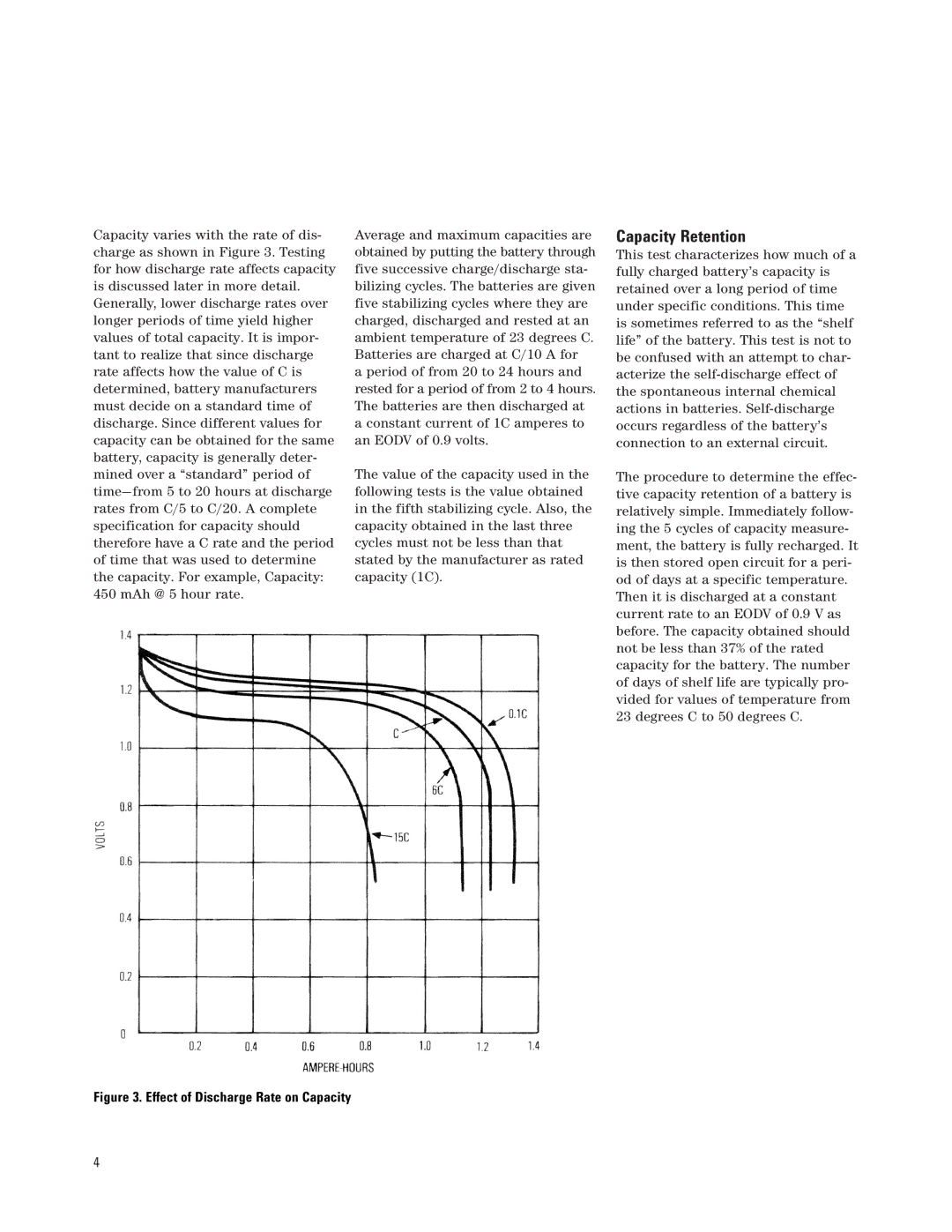
Capacity varies with the rate of dis- charge as shown in Figure 3. Testing for how discharge rate affects capacity is discussed later in more detail. Generally, lower discharge rates over longer periods of time yield higher values of total capacity. It is impor- tant to realize that since discharge rate affects how the value of C is determined, battery manufacturers must decide on a standard time of discharge. Since different values for capacity can be obtained for the same battery, capacity is generally deter- mined over a “standard” period of time— from 5 to 20 hours at discharge rates from C/5 to C/20. A complete specification for capacity should therefore have a C rate and the period of time that was used to determine the capacity. For example, Capacity: 450 mAh @ 5 hour rate.
Average and maximum capacities are obtained by putting the battery through five successive charge/discharge sta- bilizing cycles. The batteries are given five stabilizing cycles where they are charged, discharged and rested at an ambient temperature of 23 degrees C. Batteries are charged at C/10 A for
a period of from 20 to 24 hours and rested for a period of from 2 to 4 hours. The batteries are then discharged at a constant current of 1C amperes to an EODV of 0.9 volts.
The value of the capacity used in the following tests is the value obtained in the fifth stabilizing cycle. Also, the capacity obtained in the last three cycles must not be less than that stated by the manufacturer as rated capacity (1C).
Capacity Retention
This test characterizes how much of a fully charged battery’s capacity is retained over a long period of time under specific conditions. This time is sometimes referred to as the “shelf life” of the battery. This test is not to be confused with an attempt to char- acterize the
The procedure to determine the effec- tive capacity retention of a battery is relatively simple. Immediately follow- ing the 5 cycles of capacity measure- ment, the battery is fully recharged. It is then stored open circuit for a peri- od of days at a specific temperature. Then it is discharged at a constant current rate to an EODV of 0.9 V as before. The capacity obtained should not be less than 37% of the rated capacity for the battery. The number of days of shelf life are typically pro- vided for values of temperature from 23 degrees C to 50 degrees C.
Figure 3. Effect of Discharge Rate on Capacity
4
